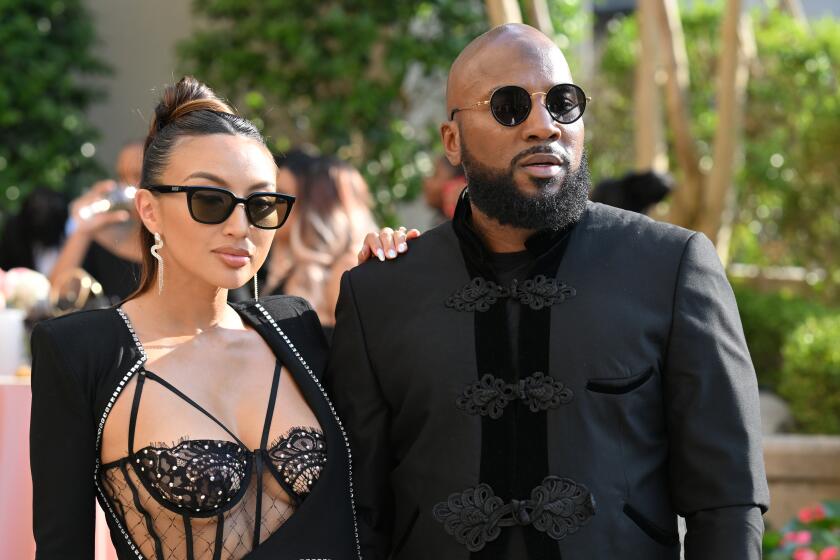Paul Wasserman, 73; career as music publicist unraveled over investment scheme
Paul Wasserman, whose career as a top entertainment publicist for musical greats such as the Rolling Stones and Bob Dylan and movie stars such as Jack Nicholson crashed in 2000 when he was jailed for using the names of famous clients to swindle some of his closest noncelebrity friends, has died. He was 73.
Wasserman died Sunday of respiratory failure at the Kindred Hospital in Los Angeles, said publicist Joan Myers, a friend of Wasserman.
During his four-decade career, the journalist-turned-publicist built one of the world’s most impressive client lists -- one that included pop music artists such as the Who, Neil Diamond, James Taylor, Paul Simon, Tom Petty and Linda Rondstadt.
Wasserman also represented numerous actors, including Lee Marvin, Dennis Hopper, Jack Lemmon and George C. Scott. And he publicized dozens of films, including “Cat Ballou,” “Easy Rider,” “Annie Hall” and “Star Wars.”
But it was in his role as a rock ‘n’ roll publicist that the man whom friends called Wasso made his greatest mark.
“He was one of the first ones to sort of accept and represent the new school of rock ‘n’ roll, so he was able to use the so-called old-school tools that he had in representing this new breed of people,” music producer and impresario Lou Adler, who met Wasserman in the early 1960s, told The Times on Monday.
Adler, who said Wasserman “was very involved in the Mamas and the Papas PR,” was “able to cross both worlds and bring them together, which was very beneficial to the acts because he had contacts at Life magazine and [the Saturday Evening] Post magazine. We had to make inroads into those old established outlets, and he already had them.”
In 1987 -- the same year Wasserman conducted a campaign that landed U2 on the cover of Time magazine -- five pop music reporters and critics for The Times named him as a member of “Los Angeles rock’s royal court” -- “the people whose telephone calls are always returned.”
“He was the most important rock publicist in town,” Robert Hilburn, The Times’ former longtime pop music critic, said Monday. “He was a brilliant media strategist who helped usher rock ‘n’ roll into an era of new respectability.”
“Rock ‘n’ roll was this rowdy kind of thing, and he was somehow able to make the mainstream press more interested in them and make the artists available for interviews and stories,” said Hilburn.
Indeed, Hilburn said, “he was able to coax some of the most reluctant pop stars, such as Dylan and the Rolling Stones, to do interviews.”
When Mick Jagger balked at doing a promised post-concert interview with Hilburn in San Antonio in 1975, Wasserman responded by stationing Hilburn outside Jagger’s hotel room and then waited with him for several hours.
When the door finally opened -- at 4 a.m. -- Wasserman pushed Hilburn inside, and he wound up interviewing the clearly exhausted Jagger as he lay on his bed.
“He was not intimidated by the stars, and he knew and respected the press’ needs,” Hilburn said of Wasserman. “I had great affection for the guy. It was fun being around him. It’s such a tragedy what happened to him.”
Those who knew Wasserman were shocked when they learned that for more than a decade, he had been using his connections to swindle people by falsely claiming to be selling shares in investment schemes that he said were backed by clients Nicholson, U2 and the Internet portal Yahoo.
Wasserman, according to a 2000 Times profile of him when he was confined to a six-man cell at the Los Angeles County Men’s Central Jail, “cajoled friends and acquaintances out of cash, usually in $10,000 and $25,000 chunks.”
“He got to me on the greed factor,” Brenda Kershenbaum, one of his victims, said at the time. She had invested $25,000 in 1999 in a bogus stock option after Wasserman told her that Nicholson had also bought into it.
In November 2000, a Los Angeles Superior Court judge accepted Wasserman’s guilty plea to one felony count of grand theft.
He was sentenced to six months in jail, five years’ probation and restitution of nearly $87,000 to be paid to Kershenbaum and two others. Most of the other people Wasserman admitted to duping, according The Times’ story, did not file police reports.
In an exclusive jailhouse interview with The Times, Wasserman acknowledged swindling more than 20 people. In an attempt to explain what had brought him to jail, Wasserman began by saying he had battled alcoholism.
Like the inability to have only one drink, he said, “everything in my life is not enough. I wasn’t as important as I thought I should be. In the back of my mind, I was going to be famous, whatever that means. I’m this ‘legendary’ person [in entertainment publicity] with this great reputation -- so where am I? Where’s my $20-million deal?”
The son of European immigrants -- a garment designer and a housewife -- Wasserman was born in the Bronx, N.Y., on July 30, 1934. His family moved to Los Angeles when he was about 3.
He graduated from Fairfax High School and enrolled at USC. He dropped out of Stanford Law School in 1958 and decided on a career in journalism.
A story he wrote about Bob Hope for United Press International led to a job offer from Hope’s publicist. But he was soon hired away by publicist Jim Mahoney.
Wasserman was assigned to help with major accounts, including Frank Sinatra, Andy Williams, the Beach Boys and the Beatles’ record label, Apple Records.
He did his job so well that in the late ‘60s, Mahoney made him a financial partner and renamed the company Mahoney/Wasserman Public Relations. In the late ‘80s, Wasserman headed up a new entertainment publicity division for the advertising agency D’Arcy, Masius, Benton & Bowles and launched his own company, the Wasserman Group, in the early ‘90s.
When he died, Wasserman, who also had had problems with cocaine, had been sober for more than 20 years and was “an incredible advocate for AA and a sponsor for others,” said Myers, who worked for Wasserman in the late ‘70s.
“He was,” she said, “a great mentor.”
A graveside service will be held at 2 p.m. Nov. 28 at Mt. Sinai Memorial Park, 5950 Forest Lawn Drive, Los Angeles.
--
More to Read
The biggest entertainment stories
Get our big stories about Hollywood, film, television, music, arts, culture and more right in your inbox as soon as they publish.
You may occasionally receive promotional content from the Los Angeles Times.






